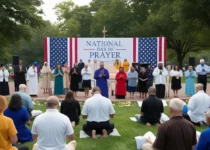Buy Nothing Day
Buy Nothing Day: The Canadian Guide to Stepping Off the Consumer Treadmill
Have you ever felt that rush of excitement when dropping your hard-earned cash on something new, only to experience that familiar pang of buyer’s remorse a few days later? I certainly have. There I was last November, arms loaded with Black Friday “deals” I didn’t need, wondering why my wallet felt so light and my satisfaction so fleeting.
That’s exactly the feeling Buy Nothing Day aims to challenge. As we approach another season of holiday shopping frenzy, this countercultural celebration offers Canadians a refreshing alternative – a 24-hour detox from our consumption habits that might just change your relationship with shopping forever.

What Is Buy Nothing Day?
Buy Nothing Day is exactly what it sounds like – a day dedicated to buying absolutely nothing. No impulse purchases, no online shopping sprees, not even that “essential” morning coffee from Tim Hortons. It’s a complete pause on consumer spending.
Typically observed on the day after American Thanksgiving (coinciding with Black Friday), Buy Nothing Day has become a global phenomenon. Here in Canada, it falls on Friday, November 29th this year, strategically positioned as a direct challenge to one of the biggest shopping days of the year.
But what’s the point of all this non-shopping?
What Is the Purpose of Buy Nothing Day?
The purpose goes much deeper than simply saving money for one day. Buy Nothing Day encourages us to reflect on our consumption habits, question the environmental impact of our purchases, and consider alternatives to the “shop till you drop” mentality that’s become so ingrained in our society.
It’s about recognizing that our self-worth isn’t tied to what we own, and that happiness doesn’t have a price tag attached. As someone who’s participated for the past three years, I’ve found it surprisingly liberating to step back from the constant barrage of advertisements and “limited-time offers” that seem to follow us everywhere.
Who Started Buy Nothing Day?
The movement was launched by Vancouver artist Ted Dave in 1992, making it a Canadian creation we can be proud of! It was later promoted by Adbusters, the Canadian anti-consumerist magazine based in Vancouver, British Columbia. From these humble Canadian beginnings, the movement has spread to over 65 countries worldwide.
What Is the Meaning of Nothing Day?
While the name sounds straightforward, the meaning runs deep. “Nothing Day” represents a powerful rejection of the idea that consumption equals happiness. It challenges the notion that we need to constantly acquire new things to feel fulfilled.
In essence, it’s about finding value in experiences rather than possessions – reconnecting with what truly matters beyond material goods. It’s about remembering that sometimes, less really is more.
What Are the Rules of Buy Nothing Day?
The beauty of Buy Nothing Day lies in its simplicity. The primary rule is straightforward: don’t buy anything for 24 hours. No groceries, no coffee, no online shopping, no impulse purchases – absolutely nothing.
But beyond this core principle, there are several ways Canadians typically observe the day:
How Do You Celebrate Buy Nothing Day?
- Complete Consumer Fast: The purist approach – avoid all forms of spending for the entire day.
- Credit Card Cut-Up: Some participants symbolically cut up their credit cards (though I’d recommend making a photocopy if you actually need the card later!).
- Reverse Shopping: Walking through malls without purchasing anything, sometimes engaging in creative protest.
- Free Markets: Organizing swap meets where people trade items without money changing hands.
- Community Activities: Hosting potlucks, neighborhood clean-ups, or skill-sharing workshops.
I personally love organizing a potluck with friends where everyone brings something they already have at home. It’s a wonderful way to build community while honoring the spirit of the day.
What Is the Buy Nothing Trend?
The Buy Nothing trend has evolved beyond a single day of non-consumption into a broader lifestyle movement. Buy Nothing Groups have sprouted up across Canada, creating hyperlocal gift economies where neighbors share, lend, and give away items instead of buying new ones.
The movement has exploded on social media, with the Buy Nothing Project growing into thousands of local groups worldwide. In Canada alone, hundreds of communities have active Buy Nothing groups on Facebook and other platforms.
How Does the Buy Nothing Project Work?
The Buy Nothing Project works on a simple premise: give where you live. Local groups create spaces (usually online) where members can:
- Gift items they no longer need
- Express gratitude when receiving gifts
- Ask for things they need
- Share skills and services
- Build genuine connections with neighbors
There are no trades, no bartering, and absolutely no money changing hands. It’s a true gift economy based on abundance rather than scarcity.
How Do I Find My Local Buy Nothing Group?
Finding your local Buy Nothing group is typically as simple as searching on Facebook for “Buy Nothing” plus your neighborhood or city name. Many Canadian communities have active groups, particularly in urban centers like Toronto, Vancouver, Montreal, and Calgary.
If you can’t find an existing group, consider starting one! The official Buy Nothing Project website provides resources for launching a group in your area.
What Are the Benefits of Buy Nothing Day?
Participating in Buy Nothing Day offers numerous benefits, both personal and collective:
Financial Benefits
Taking a break from spending helps us recognize just how much money slips through our fingers on a typical day. Many participants report that the awareness gained from this 24-hour spending fast leads to more mindful financial choices long-term.
Environmental Impact
Every product we purchase has an environmental footprint – from resource extraction to manufacturing, shipping, and eventual disposal. By buying nothing for a day, we reduce our carbon footprint and ecological impact.
Psychological Freedom
There’s something genuinely liberating about stepping off the consumer treadmill, even temporarily. Many participants describe feeling a weight lifted when they’re not constantly evaluating potential purchases.
As one Toronto participant told me, “It’s like giving your brain a break from the constant background process of ‘should I buy this?'”

What Are the Negative Effects of Buy Nothing Day?
While Buy Nothing Day offers many benefits, it’s worth acknowledging potential criticisms:
Economic Concerns
Critics argue that if widely adopted, reduced consumer spending could negatively impact businesses and workers, particularly in retail. However, proponents counter that the day encourages more thoughtful consumption rather than eliminating it entirely.
Accessibility Issues
For some people, especially those living in food deserts or with limited resources, shopping in bulk when items are on sale is a necessary economic strategy. A rigid interpretation of Buy Nothing Day might not be practical for everyone.
Preparation Requirements
Participating successfully often requires advance planning (stocking up on groceries, filling the gas tank, etc.), which can ironically lead to increased consumption before the day itself.
Why Is Buy Nothing Day a Bad Idea?
Some critics suggest Buy Nothing Day misses the mark by focusing on individual consumer choices rather than addressing systemic issues in our economy. Others point out that the movement can sometimes feel elitist or judgmental toward those who can’t participate.
I think these are valid concerns, but they don’t negate the value of the awareness the day creates. Like most movements, it’s most effective when approached with flexibility and understanding of different circumstances.
What Is the No Buy Movement?
The No Buy Movement extends the principles of Buy Nothing Day into longer periods – typically months or even a full year. Participants commit to purchasing only essentials (groceries, medication, basic toiletries) while avoiding all non-essential spending.
Many Canadians have documented their No Buy journeys online, sharing strategies for everything from handling social situations to maintaining a professional wardrobe without new purchases.
What Can I Do on Black Friday Instead of Shopping?
Black Friday doesn’t have to mean fighting crowds for deals. Here are some alternative activities that many Canadians enjoy:
- Host a board game marathon with friends
- Volunteer at a local community organization
- Go for a hike in one of Canada’s beautiful parks
- Organize a clothing swap party
- Cook a feast using only ingredients you already have
- Create homemade holiday gifts
- Declutter your home and donate items in good condition
I’ve found that a day spent outdoors in nature is the perfect antidote to Black Friday madness – especially with a thermos of hot chocolate to ward off our Canadian chill!
What Is the Opposite of Black Friday?
Buy Nothing Day functions as the conceptual opposite of Black Friday. Where Black Friday celebrates consumption, discounts, and acquiring more, Buy Nothing Day promotes restraint, reflection, and finding value in what we already possess.
Another contrasting event is “Giving Tuesday,” which follows Black Friday and Cyber Monday. Rather than focusing on getting deals, Giving Tuesday encourages charitable donations and community service.
Can You Sell Stuff from Buy Nothing?
This question reflects a common misunderstanding about Buy Nothing groups. The Buy Nothing Project operates on a gift economy model, which means items are freely given with no expectation of return. Selling items received from Buy Nothing groups violates the core principles of the movement and is generally prohibited within these communities.
If you’re looking to sell items, platforms like Facebook Marketplace, Kijiji, or local consignment shops would be more appropriate than Buy Nothing groups.
How to PM on Buy Nothing?
Private messaging in Buy Nothing groups typically follows specific guidelines to maintain transparency and fairness. Most groups ask that initial interactions happen in the comments section of posts, with private messages used only to arrange pickup details.
When sending a PM (private message) in a Buy Nothing group:
- Be respectful of the giver’s time
- Provide clear information about when you can pick up
- Follow through on arranged pickups
- Express gratitude
Remember that each local group may have slightly different norms and expectations.
When Is Buy Nothing Day in 2025?
Mark your calendars, Canadians! Buy Nothing Day in 2025 will be observed on Friday, November 28th. This date follows the traditional timing of falling on the day after American Thanksgiving, which is always celebrated on the fourth Thursday of November.
As one of the busiest shopping days of the year (commonly known as Black Friday), November 28th provides the perfect backdrop for this consumer detox. The symbolic timing is intentional – while millions rush to stores for deals and discounts, Buy Nothing Day participants choose to step back and reflect on their consumption habits instead.
If you’re planning to participate, I recommend preparing ahead of time. Stock up on essentials the day before, plan some alternative activities with friends or family, and maybe even delete those shopping apps from your phone temporarily to avoid temptation. Remember, it’s just 24 hours – but those 24 hours might just change how you think about shopping for months to come.
What Does Gifting Mean in Buy Nothing?
Gifting in the Buy Nothing context means offering items with absolutely no expectations attached. It’s not a loan, a trade, or a favor to be repaid – it’s a true gift given freely to another community member.
This unconditional gifting creates a different kind of economy based on abundance, trust, and community connection rather than monetary value. Through repeated positive interactions, these groups build social bonds that transcend typical consumer relationships.
Buy Nothing Day offers us Canadians a valuable opportunity to pause and reconsider our relationship with consumption. Whether you’re motivated by environmental concerns, financial goals, or simply the desire to break free from consumer culture, taking one day to step off the spending treadmill can be surprisingly powerful.
I’ve found that the real value of Buy Nothing Day isn’t in the money saved during those 24 hours – it’s in the perspective gained. That shift in thinking stays with you long after the day ends, influencing decisions throughout the year.
As the holiday shopping season approaches, I invite you to join thousands of Canadians in celebrating Buy Nothing Day on November 29th. You might discover, as I have, that the best things in life truly aren’t things at all.
Will you take the challenge this year?
Meta Description:


